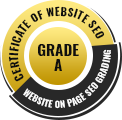One of the simplest ways to build a website and maintain total flexibility with the development is to download a free e-commerce website template that corresponds to your site’s needs, and then edit the template with a WYSIWYG editor. The editor I use is called KompoZer. There are only a couple of things you need to understand in order to get started.
First of all, when you’re developing an HTML website, you typically have three types of files. There’s your standard HTML page, which is saved with the.HTML extension. Then you have your graphics, and these are commonly kept together in a folder called Images. Your e-commerce web page will refer to them every time your page is loaded, so you place them onto your page, don’t move them around or change the names. Just leave them where they are. Finally, you have something called a style sheet that tells the HTML page what it should look like. If you want to get fancy, you can make changes to your style sheet directly. But it’s better to just make those changes using KompoZer.
You can get started with this type of web development right now. Perform a web search on the term “free e-cmmerce website templates.” Get a website templates. Don’t go crazy – keep it simple to start out. Next, you’ll want to download KompoZer. KompoZer is available for free at Kompozer.net.
One you have your files, you’ll want to unzip them and install your KompoZer software. Launch the program, and then open the index file of the template you just downloaded. Now you’re ready to roll up your sleeves and get to work.
Building e-commerce web pages can be fun, even exciting. You can add or change graphics, write new content and create links to other pages on your site. When you’re satisfied with the look and feel and then save the page once to keep your changes. Then save it again, but this time rename your file according to the links created.
Whatever type of site you’re developing, you’ll want to be sure to include an About page, Terms and Privacy Policy. After that, you can go crazy with content. Ideally, each page should have 350 to 700 words. When you’re ready to launch, all of your files will need to be uploaded to your web hosting account in the same file structure that you used to build your site. Knowing these fundamentals will help you as you build and maintain other types of e-commerce websites.
Source by James Corr


